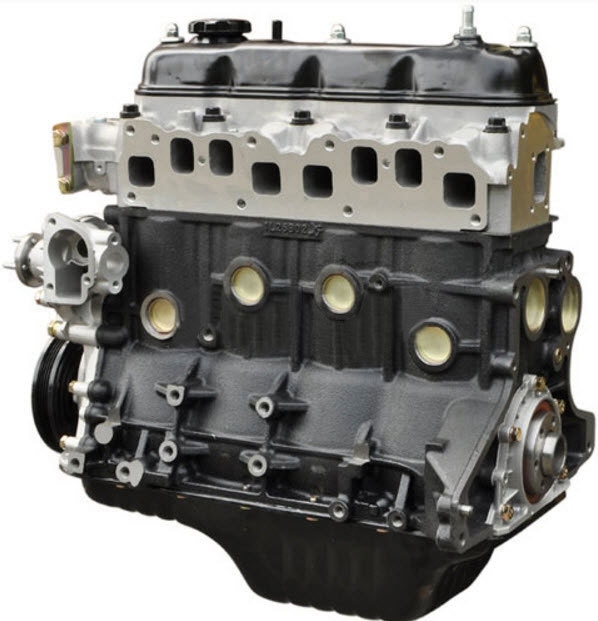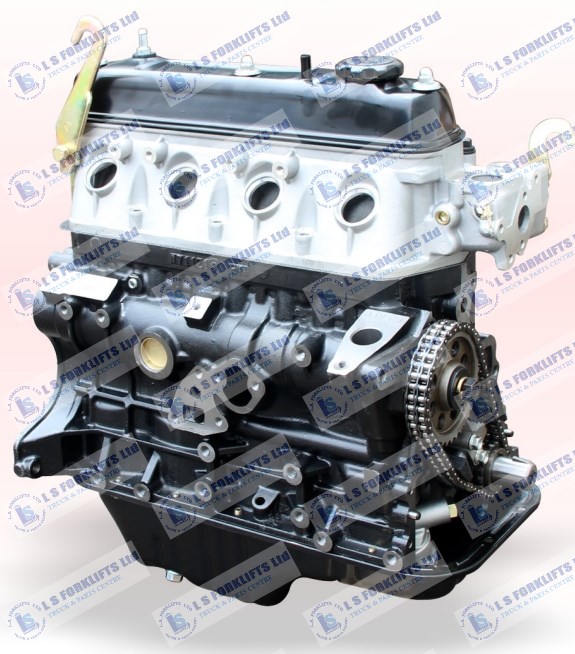Why the Engine Is the Best Choice for Efficiency and Performance in Your Auto
The engine stays a crucial part in automotive layout, mainly as a result of its significant impact on both efficiency and efficiency. As improvements in modern technology enable smaller sized engines to supply exceptional power while enhancing fuel economy, the combination of attributes such as turbocharging and crossbreed systems ends up being increasingly vital. These developments not just boost driving experience however likewise address environmental concerns. Nonetheless, the question emerges: just how do these components coalesce to redefine our understanding of automotive performance? Discovering this balance reveals much deeper insights right into the future of engine design.
Comprehending Engine Types
Comprehending the numerous kinds of engines is vital for optimizing efficiency and performance in vehicle style. The key engine kinds include interior combustion engines (ICE), electric engines, and hybrid systems, each offering distinct benefits and limitations.
Interior burning engines, which can be further classified into gasoline and diesel variations, depend on the combustion of fuel to create power. Fuel engines normally supply higher RPMs and better velocity, while diesel motor are known for their torque and fuel effectiveness, making them suitable for durable applications.
Electric engines, on the other hand, utilize electrical motors powered by batteries or gas cells. They offer instantaneous torque distribution, leading to smooth acceleration and reduced exhausts. The efficiency of electrical engines is considerably higher than that of ICEs, making them a prominent option for eco-conscious customers.
Crossbreed systems incorporate both inner burning and electrical engines, leveraging the toughness of both modern technologies. They maximize gas consumption by utilizing electric power at lower rates and switching to gasoline or diesel for higher rates or larger tons.
Picking the right engine type is essential for attaining preferred efficiency metrics and environmental sustainability in modern-day automotive engineering.
The Impact of Engine Dimension
Engine dimension often plays a critical duty in figuring out a car's efficiency and performance. Usually measured in litres or cubic centimeters, engine size straight affects the power outcome and torque qualities of a lorry. Larger engines typically generate more horsepower, making it possible for greater velocity and greater top rates. This is especially advantageous in applications requiring durable performance, such as cars and durable trucks.
Nonetheless, raised engine size usually associates with diminished gas efficiency. Smaller sized engines can provide ample efficiency for everyday driving while promoting much better effectiveness, making them a preferred option in portable and mid-size cars.
In addition, improvements in engine style, such as turbocharging and straight fuel injection, permit smaller engines to achieve power degrees comparable to their bigger counterparts. This fad stresses the importance of not only concentrating on engine dimension but also considering general vehicle design and technology (4y engine). Ultimately, the influence of engine dimension on efficiency and effectiveness emphasizes the requirement for customers to assess their particular driving needs and choices when picking an automobile
Advanced Engine Technologies
Advancements in engine innovations have actually dramatically improved the landscape of auto efficiency and efficiency, building upon the foundational principles developed by engine dimension. Especially, innovations such as turbocharging and direct fuel shot have enabled smaller engines to supply power degrees previously connected with larger equivalents. Turbochargers press air getting in the engine, enabling enhanced power output without an equivalent increase in engine resource dimension, while direct injection enhances fuel distribution, improving combustion effectiveness.
In addition, variable shutoff timing systems have actually emerged as a vital technology, enabling engines to change shutoff procedure based upon driving problems. This versatility boosts both efficiency during velocity and fuel effectiveness during travelling. Hybrid and electrical engine technologies additionally highlight the shift in automobile style, incorporating standard interior burning engines with electric motors to optimize efficiency while minimizing discharges.
Moreover, developments in products science have actually led to lighter, extra durable engine elements, even more boosting efficiency and durability. The combination of advanced electronic devices and engine control devices likewise enables for real-time adjustments, making sure ideal performance throughout numerous conditions. Jointly, these innovative engine technologies not just improve automobile performance but also contribute to a much more sustainable vehicle future, showing the recurring evolution of engine style.
Balancing Power and Performance
Striking a balance in between power and efficiency is essential in contemporary vehicle layout as makers seek to fulfill progressively stringent emissions guidelines while satisfying consumer demand for performance (4y engine). The difficulty exists in maximizing engine characteristics to provide durable power outcome without giving up gas economic situation
To accomplish this balance, designers employ numerous approaches, such as turbocharging, which improves engine power forcibly in even more air, allowing for a smaller engine variation that boosts gas performance. Variable valve timing technologies likewise play a significant duty, enabling engines to readjust their efficiency attributes based on driving conditions, therefore boosting both power and performance.
Additionally, improvements in products and manufacturing strategies have actually caused lighter engine components, which minimize overall vehicle weight and enhance fuel effectiveness without endangering power. Crossbreed modern technologies have also arised as a practical option, integrating conventional internal burning engines with electric powertrains to provide a boost in performance while keeping lower discharges.

Future Fads in Engine Design

In addition, the development of advanced materials, such as high-strength alloys and light-weight compounds, is set to revolutionize engine components. These products not just decrease weight but also boost thermal performance, thus maximizing efficiency. Additionally, manufacturers are discovering variable compression proportions, permitting engines to adjust to various driving conditions, boosting both power outcome and fuel economic climate.
Better, the rise click here now of expert system and artificial intelligence in engine design is making it possible for anticipating upkeep and real-time performance optimization. This modern technology can bring about engines that self-adjust for optimal effectiveness based upon driving patterns.

Final Thought
To conclude, the engine serves as a vital element in accomplishing ideal performance and performance in contemporary vehicles. Advanced technologies, such as turbocharging and hybrid systems, boost power output while reducing gas intake and discharges. The interaction between engine dimension and style remains to progress, driving developments that balance electrifying efficiency with environmental sustainability. As vehicle design proceeds, the focus on establishing efficient, effective engines will certainly remain critical fit the future of transportation.
In addition, advancements in engine layout, such as turbocharging and straight gas injection, enable smaller sized engines to accomplish power levels equivalent to their bigger counterparts.Developments in engine modern technologies have actually substantially reshaped the landscape of automotive performance and effectiveness, structure upon the foundational concepts established by engine dimension. Turbochargers compress air getting in the engine, enabling for enhanced power outcome without a corresponding increase in engine dimension, while straight injection maximizes gas delivery, enhancing burning performance.
Hybrid and electric engine innovations further illustrate the change in automobile design, combining traditional inner combustion engines with electrical motors to make the most of efficiency while decreasing discharges.
Collectively, these innovative engine modern technologies not only improve car performance yet likewise contribute to a more sustainable automotive future, showing the ongoing development of engine design. (4y engine)
 Jonathan Taylor Thomas Then & Now!
Jonathan Taylor Thomas Then & Now! Freddie Prinze Jr. Then & Now!
Freddie Prinze Jr. Then & Now! Kelly Le Brock Then & Now!
Kelly Le Brock Then & Now! Earvin Johnson III Then & Now!
Earvin Johnson III Then & Now! The Olsen Twins Then & Now!
The Olsen Twins Then & Now!